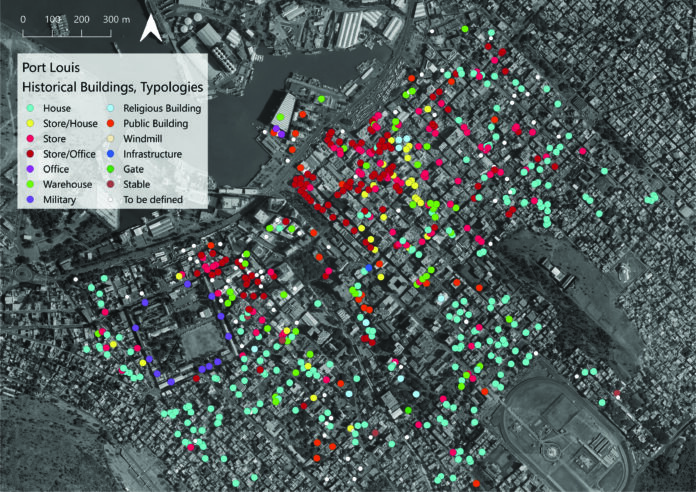In a few months’ time, a new free-access website will enable visitors to retrace the archaeological and architectural history of Port-Louis., from the first settlements in the XVIIIe century. Funded by Italy and Ca’Foscari University, the project is compiling a phenomenal amount of data, ranging from the results of the GPR (Ground penetration radar), to probe the subsoil without digging, to archival documents, cartography, photography and historical and anthropological research data. Dominique Bellier
Since 2019, a team of specialists (eight Italians from the CA’ Foscari University of Venice and five Mauritians from the Aapravasi Ghat Trust Fund and the National Heritage Fund) have been compiling data that will provide the best possible visualization of the evolution and transformations of Port-Louis since the first human settlements. With just a few clicks, users will gain a reliable idea of the capital’s topography and appearance at different times in its history through interactive maps, discovering the types of historic buildings, houses and businesses in which Port-Louisianslived, and so on.
This academic research tool, which will also be invaluable to urban planners, managers and developers, will reveal which neighborhoods appeared when, which have disappeared, what type of housing was used by slaves, freemen, state officers or Gujarati merchants, what the communication routes looked like, and so on.
The key to the project is the Geographic Information System (GIS), which can integrate a multitude of different data on a single platform: descriptions, photos, engravings or other images of historic buildings, building materials and techniques, architectural types, decorative elements; historic topography and cartography; photographs; 3D modeling of building types, etc.
“When I started in 2019,” explains project leader Diego Calaon, an archaeologist specializing in Mauritius, “I feared that it would encourage a form of colonial nostalgia, but the analysis of the buildings, the remains and the history of the transformations of Port-Louis show us that it is, on the contrary, the fruit of an ongoing negotiation between politics, religion, economics and heritage, the fruit also of interactions between colonial influences, local Creole traditions and the practices of different groups from Africa, India, Southeast Asia and China. This configuration poses unique challenges for the interpretation of the urban fabric… “
From the 1880s onwards, photography provided an abundant source of information on the transition from wood to stone in construction… Diego Calaon speaks of the techniques that enabled buildings to be cooled thanks to the void created under the first floor and under the roof, and also thanks to the mango trees that covered the roofs of the houses. He was surprised to discover Normandy-style half-timbered buildings on rue de la Corderie , and insists on the importance of the lambrequin as an identifying marker characteristic of Mauritian housing, beyond its function as a drain in rainy weather…





